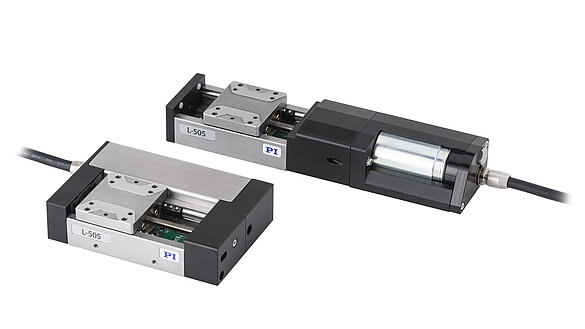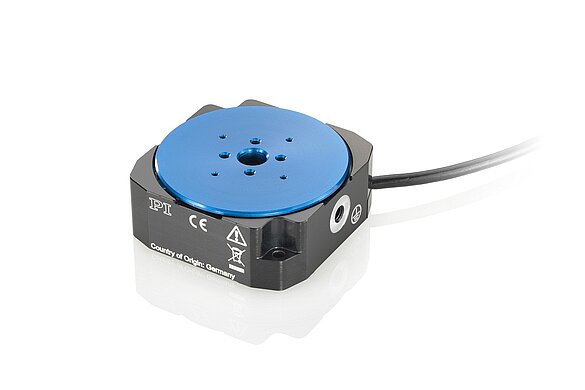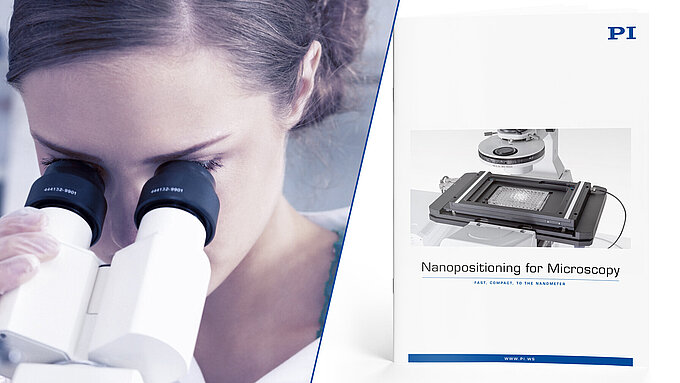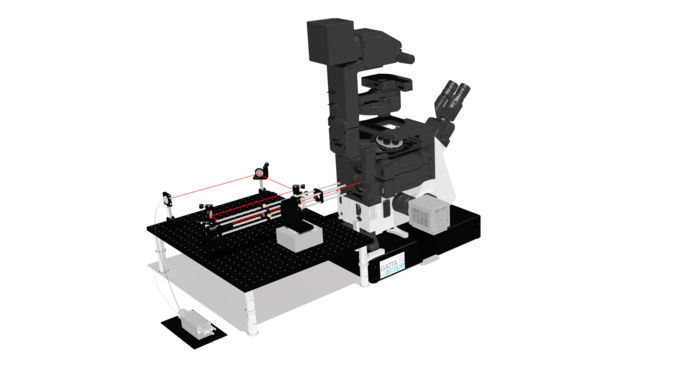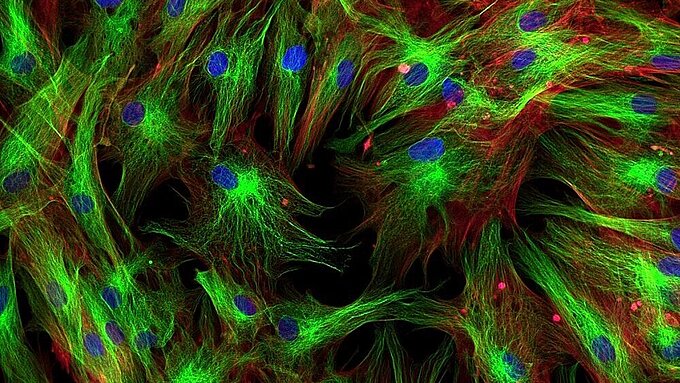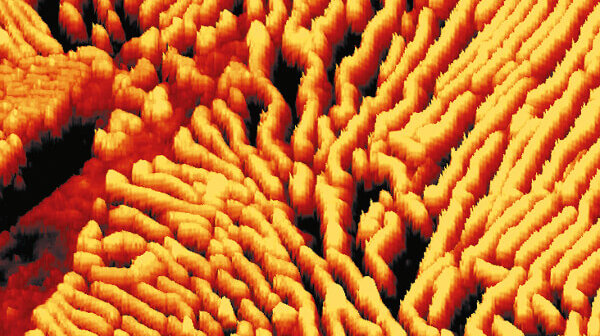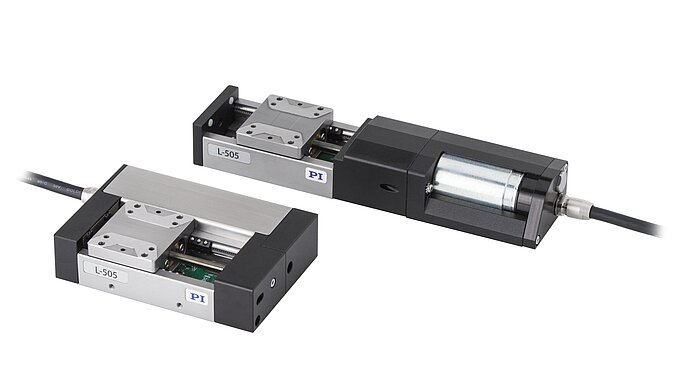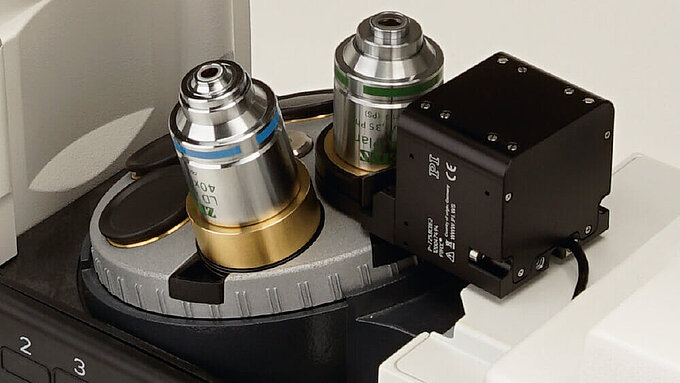Flamingo? It automatically reminds you of pink feathers, an accentuated beak, and the unique silhouette of a representative of the genus "phoenicopteridae", which always stands on one leg while sleeping.
This latter fact exactly served Professor Dr. Jan Huisken, Research Group Leader and Director of the Medical Engineering Department at >> Morgridge Institute for Research in >> Madison, WI, as the name-giving feature for the special light sheet microscopes developed by him and his team. The silhouette of these microscopes reminds us of this sleeping exotic bird.
The goal of the >> Flamingo project, which is supported by several sponsors, is to make these modular microscopes available to researchers ‒ in their laboratories ‒ free of charge.
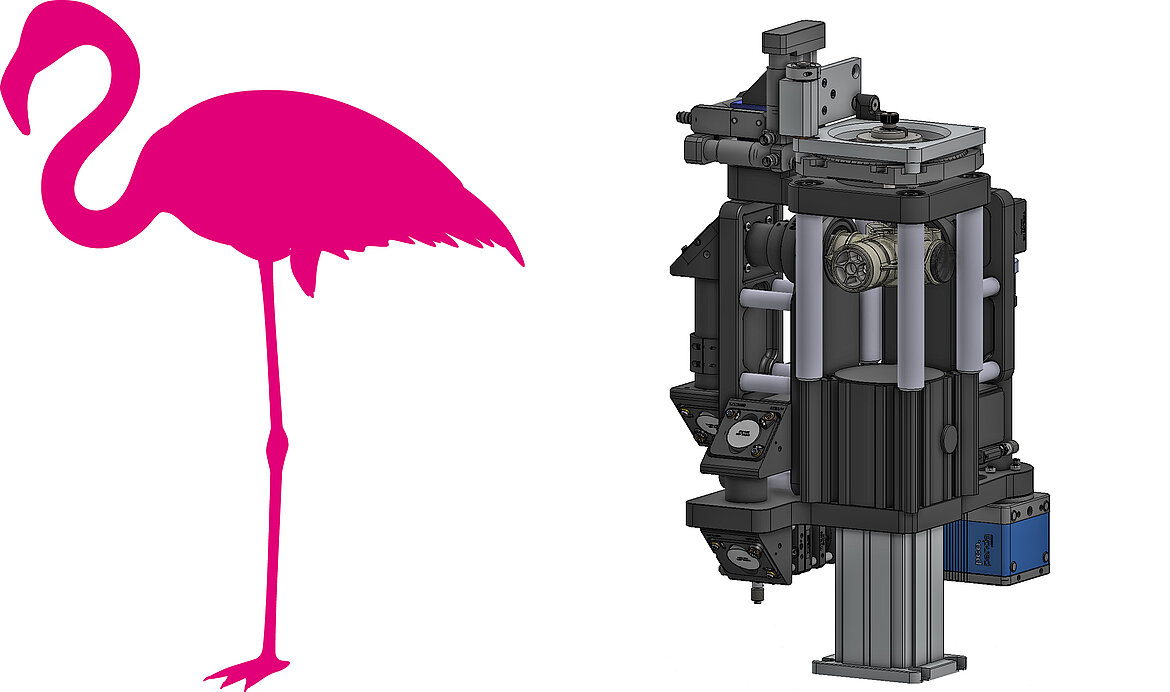
Light Sheet Microscopy: Technology and Advantages
In Light Sheet Fluorescence Microscopy (LSFM), illumination and detection are two separate optical systems that are perpendicular to each other. The laser beam used to illuminate the sample is focused in one direction and forms a light sheet that illuminates a thin layer of the sample. The fluorescent light that is emitted in this plane is captured and detected by an objective lens.
By separating the illumination from the detection, the microscope can practically be built "around the experiment". Instead of mounting samples in between microscope slide and coverslip, they are immersed in a hydrogel and placed in a cylindrical sample chamber inside the microscope. There, the conditions are close to physiological and so even continuous recordings from living specimens are possible.
Sample Positioning Is Particularly Important
The positioning of the sample plays a special role since the sample is moved linearly or rotated as required. For this purpose, PI (Physik Instrumente) supplies several subsystems. "We are proud to be among the seed supporters and sponsors of Jan Huisken’s groundbreaking Flamingo project," says Dr. Thomas Bocher, the Head of Segment Marketing 'Microscopy & Life Sciences' at PI. "For the Flamingo project, reliability and precision of modules are key factors. This means, high precision, fast movements, and a compact size of the drives together with high quality production standards and services from PI make the difference."
Low Phototoxicity
"LSFM is a very powerful and flexible platform for gentle in vivo imaging offering low phototoxicity and fast image acquisition," Jan Huisken summarizes the advantages of the technology. Because of the gentle "treatment" of the sample, LSFM is predestined for the examination of living organisms. One of the research goals of this technology is to gain a better understanding of highly dynamic processes such as embryonic morphogenesis (i.e., the development of organisms, organs, and organelles).
Modular Design
In order for the implementation to work, some conditions had to be met: The system had to be very robust, easy to assemble, and simple to operate. The solution: A straightforward, uncomplicated design with proven standard components, a small footprint, and costs as low as possible. This also allows for different, application-specific designs: In the T-SPIM design, the sample is illuminated from two opposing optics for a more uniform illumination. The addition of a second detection path results in the X-SPIM design.
Sample Positioning within the Microscope
One of the most common application in Light Sheet Microcopy is the creation of Z stacks with which the sample can be wholly depicted in three dimensions. For this purpose, the sample is moved in the Z direction (that is, along the optical axis of the objective lens). For this task, PI contributes compact linear stages of the L-505 type. These very compact linear stages have a folded drivetrain, DC motors with gearhead, linear encoders, and offer 26 mm travel range at a bidirectional repeatability of ±250 nm. The stage also excels by a high stiffness and guiding accuracy due to ball guides.
Rotating the specimen can be useful in several scenarios. Often, researchers want to be able to image their sample from just the right angle (side view, top view etc.) or want to image an organ that’s only visible from certain angles (like the heart). The other big application for rotation is so-called multi-view imaging, where z-stacks are recorded from multiple angles, e.g. 6 angles covering 360 degrees, and then the useful parts of each dataset are fused to generate one 3D image that covers the entire sample. This is particularly useful for larger samples as the sample itself scatters, refracts and absorbs the light, affecting the illumination and detection quality of structures deep inside the sample. Therefore several angles are needed to capture all the details.
The rotation of the sample is supported by the U-628 ultrasonic piezo-motor-driven rotation stage from PI. It offers fast movement of up to 720°/s at a minimum step size of 51 µrad and a bidirectional repeatability of ±102 µrad.
Motivation and Philosophy behind the Flamingo Project
Jan Huisken, co-inventor of Light Sheet Microscopy when working on his PhD at the EMBL Heidelberg (Germany), has recently started this project and states, "We aim to democratize high-end light microscopy, bringing it to campuses and labs for free. We think this will be especially useful for reproducing scientific results, something increasingly important to science." Michael Weber, the Field Application Specialist for the US East Coast in the Flamingo project adds, "We’re turning the idea of a research imaging facility upside down. We want to bring the microscope as close to the sample as possible, rather than biologists bringing their delicate samples to us." Bringing the microscope to the biologist has one major advantage: Neither the biologist, nor the sample have to travel. Since most of the samples are highly sensitive to changing environmental conditions (e.g., gravity, humidity, temperature), this approach helps researchers to focus on their work rather than caring for logistics.
The project also aims to intensify the dialogue between system developers and users in order to further the development of the LSFM technology.
Outlook
The second Flamingo system has already been set up on the East Coast of the United States. In the months and years to come, several dozens of Flamingos will be built to meet the enormous demand for state-of-the-art light sheet microscopes for research in the US and many other countries around the world. Thomas Bocher states, "PI will continue to support this philanthropic endeavor."



